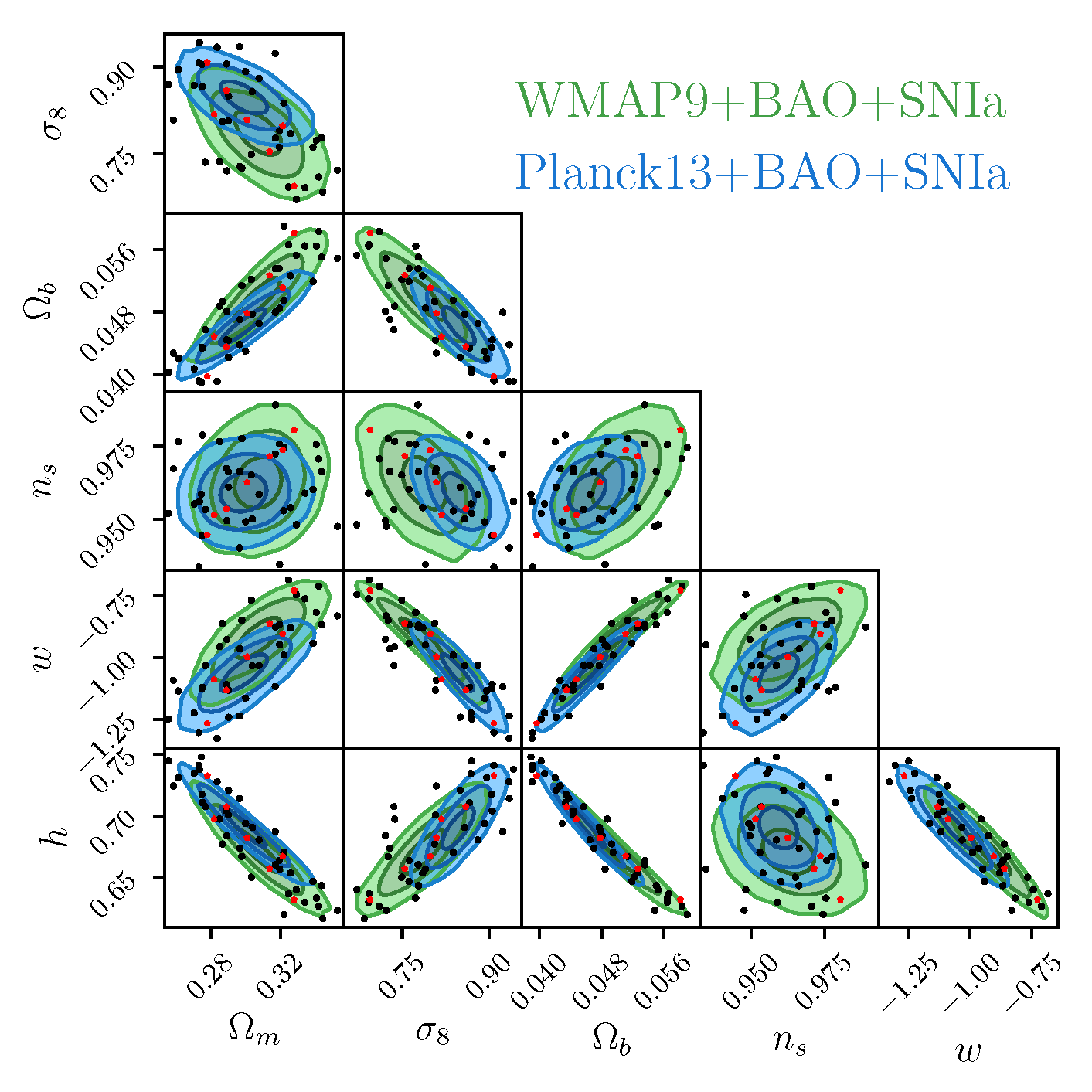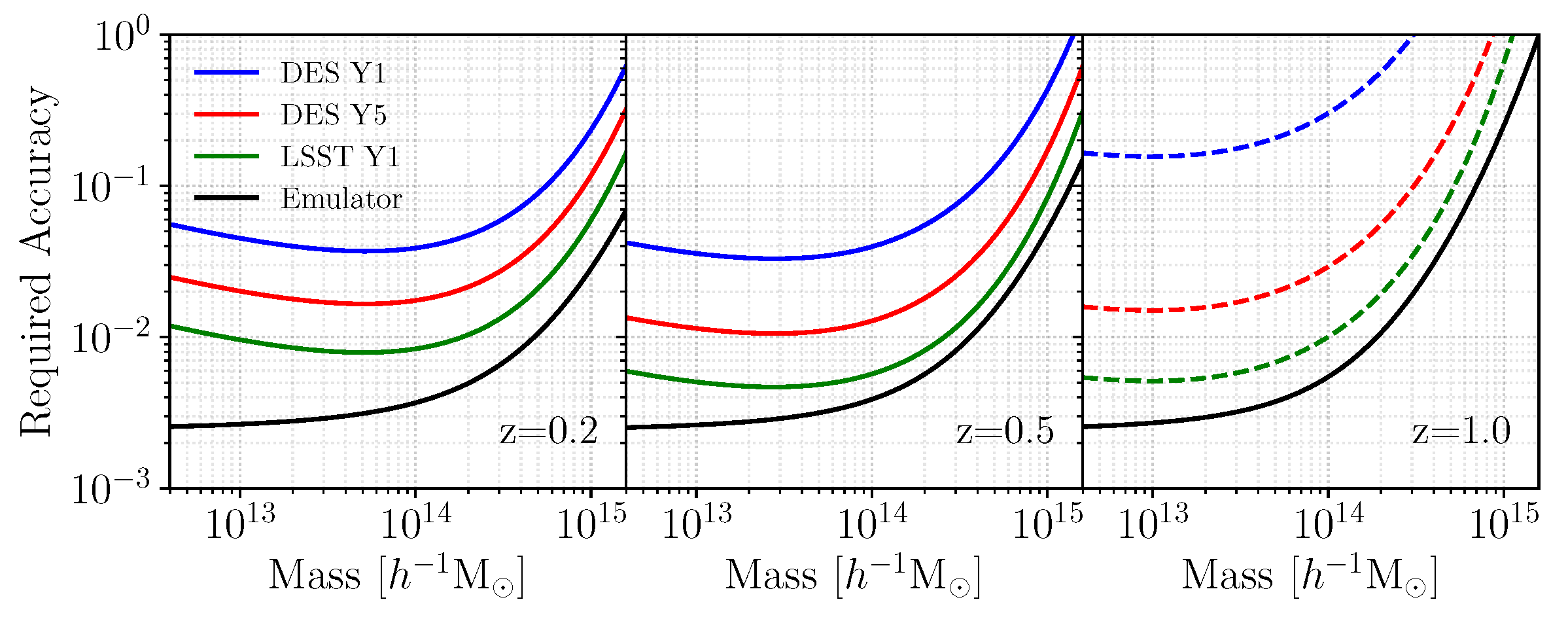The Aemulus Project I: Numerical Simulations for Precision Cosmology
Joseph DeRose, Risa H. Wechsler, Jeremy L. Tinker, Matthew R. Becker, Yao-Yuan Mao, Thomas McClintock, Sean McLaughlin, Eduardo Rozo, Zhongxu Zhai
Abstract
The rapidly growing statistical precision of galaxy surveys has lead to a need for ever-more precise predictions of the observables used to constrain cosmological and galaxy formation models. The primary avenue through which such predictions will be obtained is suites of numerical simulations. These simulations must span the relevant model parameter spaces, be large enough to obtain the precision demanded by upcoming data, and be thoroughly validated in order to ensure accuracy. In this paper we present one such suite of simulations, forming the basis for the AEMULUS Project, a collaboration devoted to precision emulation of galaxy survey observables. We have run a set of 75 (1.05 h^-1 Gpc)^3 simulations with mass resolution and force softening of 3.51\times 10^10 (Omega_m / 0.3) ~ h^-1 M_sun and 20 ~ h^-1 kpc respectively in 47 different wCDM cosmologies spanning the range of parameter space allowed by the combination of recent Cosmic Microwave Background, Baryon Acoustic Oscillation and Type Ia Supernovae results. We present convergence tests of several observables including spherical overdensity halo mass functions, galaxy projected correlation functions, galaxy clustering in redshift space, and matter and halo correlation functions and power spectra. We show that these statistics are converged to 1% (2%) for halos with more than 500 (200) particles respectively and scales of r>200 ~ h^-1 kpc in real space or k ~ 3 h Mpc^-1 in harmonic space for z\le 1. We find that the dominant source of uncertainty comes from varying the particle loading of the simulations. This leads to large systematic errors for statistics using halos with fewer than 200 particles and scales smaller than k ~ 4 h^-1 Mpc.

The Aemulus Project II: Emulating the Halo Mass Function
Thomas McClintock, Eduardo Rozo, Matthew R. Becker, Joseph DeRose, Yau-Yuan Mao, Sean McLaughlin, Jeremy L. Tinker, Risa H. Wechsler, Zhongxu Zhai
Abstract
Existing models for the dependence of the halo mass function on cosmological parameters will become a limiting source of systematic uncertainty for cluster cosmology in the near future. We present a halo mass function emulator and demonstrate improved accuracy relative to state-of-the-art analytic models. In this work, mass is defined using an overdensity criteria of 200 relative to the mean background density. Our emulator is constructed from the AEMULUS simulations, a suite of 40 N-body simulations with snapshots from z=3 to z=0. These simulations cover the flat wCDM parameter space allowed by recent Cosmic Microwave Background, Baryon Acoustic Oscillation and Type Ia Supernovae results, varying the parameters w, Omega_m, Omega_b, sigma_8, N_{eff}, n_s, and H_0. We validate our emulator using five realizations of seven different cosmologies, for a total of 35 test simulations. These test simulations were not used in constructing the emulator, and were run with fully independent initial conditions. We use our test simulations to characterize the modeling uncertainty of the emulator, and introduce a novel way of marginalizing over the associated systematic uncertainty. We confirm non-universality in our halo mass function emulator as a function of both cosmological parameters and redshift. Our emulator achieves better than 1% precision over much of the relevant parameter space, and we demonstrate that the systematic uncertainty in our emulator will remain a negligible source of error for cluster abundance studies through at least the LSST Year 1 data set.

The Aemulus Project III: Emulation of the Galaxy Correlation Function
Zhongxu Zhai, Jeremy L. Tinker, Matthew R. Becker, Joseph DeRose, Yao-Yuan Mao, Thomas McClintock, Sean McLaughlin, Eduardo Rozo, Risa H. Wechsler
Abstract
Using the N-body simulations of the AEMULUS Project, we construct an emulator for the non-linear clustering of galaxies in real and redshift space. We construct our model of galaxy bias using the halo occupation framework, accounting for possible velocity bias. The model includes 15 parameters, including both cosmological and galaxy bias parameters. We demonstrate that our emulator achieves ~ 1% precision at the scales of interest, 0.1\lt r \lt 10 h^{-1} Mpc, and recovers the true cosmology when tested against independent simulations. Our primary parameters of interest are related to the growth rate of structure, f, and its degenerate combination fsigma_8. Using this emulator, we show that the constraining power on these parameters monotonically increases as smaller scales are included in the analysis, all the way down to 0.1 h^{-1} Mpc. For a BOSS-like survey, the constraints on fsigma_8 from r\lt 30 h^{-1} Mpc scales alone are more than a factor of two tighter than those from the fiducial BOSS analysis of redshift-space clustering using perturbation theory at larger scales. The combination of real- and redshift-space clustering allows us to break the degeneracy between f and sigma_8, yielding a 9% constraint on f alone for a BOSS-like analysis. The current AEMULUS simulations limit this model to surveys of massive galaxies. Future simulations will allow this framework to be extended to all galaxy target types, including emission-line galaxies.
